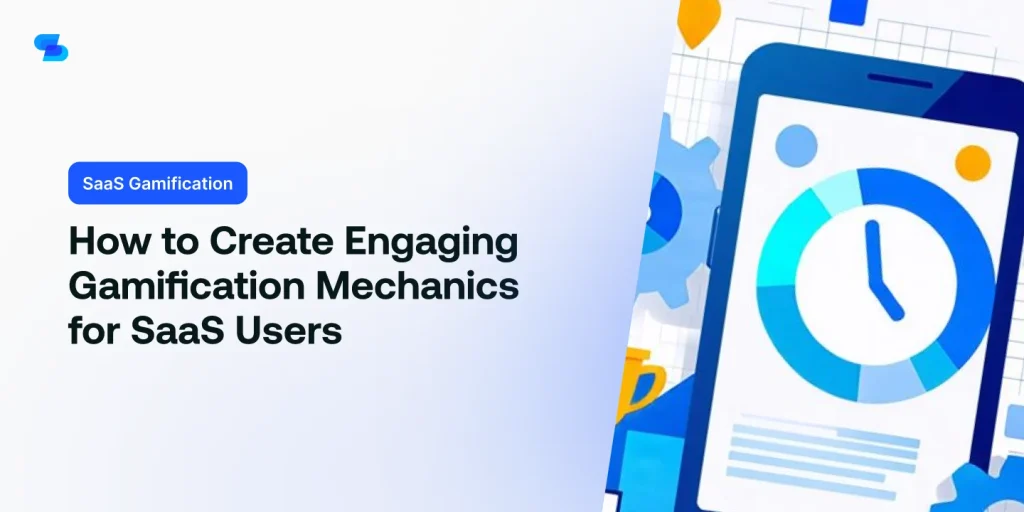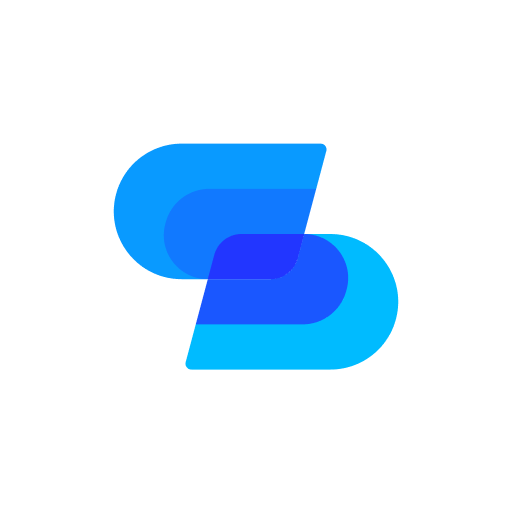You’re looking to boost user engagement in your SaaS product, and gamification might be the key. By implementing carefully crafted game-like elements, you can motivate users to interact more deeply with your platform. Start by understanding your users’ motivations and aligning gamification mechanics with their goals. From progress bars to leaderboards, these features can greatly impact user behavior and retention rates. But there’s more to effective gamification than just adding points and badges. To truly harness its power, you’ll need to strike a delicate balance between challenge and reward. So, how can you create a gamified experience that keeps users coming back for more?
Understanding User Motivation
Nearly all successful gamification strategies hinge on a deep understanding of what drives your SaaS users to engage with your product. To create effective gamification mechanics, you’ll need to explore the psychology of motivation.
Start by analyzing your user data to identify patterns in behavior and preferences. Look for key metrics such as time spent on specific features, frequency of logins, and completion rates of certain tasks.
Next, conduct user surveys and interviews to gather qualitative insights. Ask questions about their goals, pain points, and what they find rewarding about your product. This information will help you tailor your gamification elements to align with their intrinsic motivations.
Consider applying popular motivation theories like Self-Determination Theory or the ARCS Model to your gamification design. These frameworks can guide you in creating mechanics that foster autonomy, competence, and relatedness among your users.
Setting Clear, Achievable Goals
To effectively gamify your SaaS platform, you’ll need to set clear, achievable goals for your users.
Start by defining progressive milestones that guide users through your product’s key features and benefits.
Ascertain these goals align with your users’ objectives, creating a seamless integration between their needs and your platform’s capabilities.
Define Progressive Milestones
Setting clear, achievable goals through progressive milestones is an essential gamification mechanic that keeps SaaS users engaged and motivated throughout their journey. To implement this effectively, you’ll need to break down larger objectives into smaller, manageable steps.
Start by analyzing your users’ typical progression and identifying key checkpoints along their path to success. Create a series of milestones that gradually increase in complexity and reward value. Each milestone should be attainable within a reasonable timeframe, typically ranging from a few days to a couple of weeks.
Make certain that these goals align with your SaaS platform’s core features and user benefits. For example, if you’re offering a project management tool, milestones might include creating the first project, inviting team members, and completing a set number of tasks.
Use data analytics to track user progress and adjust milestone difficulty as needed. Implement a visual progress bar or achievement system to help users visualize their advancement.
Offer rewards for reaching each milestone, such as badges, points, or access to new features. Remember to provide clear instructions on how to achieve each goal and celebrate users’ successes to reinforce positive behavior and encourage continued engagement.
Align With User Objectives
Alignment between gamification mechanics and user objectives is essential for driving engagement and long-term success in your SaaS platform. To achieve this, you need to understand your users’ goals and tailor your gamification elements accordingly. Start by conducting user surveys and analyzing usage data to identify key motivations and pain points.
Once you’ve gathered insights, design gamification mechanics that directly support user objectives. For example, if users aim to improve productivity, implement progress bars and time-tracking features. If they’re focused on skill development, create skill trees and learning pathways. Guarantee that each gamified element serves a purpose and contributes to the user’s overall goals.
Set clear, achievable goals within your gamification system. Break down larger objectives into smaller, manageable tasks to maintain user motivation. Use SMART criteria (Specific, Measurable, Achievable, Relevant, Time-bound) when defining these goals.
Regularly update and adjust objectives based on user feedback and performance metrics.
Designing Meaningful Reward Systems
To create an effective reward system for your SaaS users, implement a tiered achievement structure that motivates continuous engagement.
Offer customizable reward options to cater to diverse user preferences and increase satisfaction.
Tiered Achievement Structure
A well-designed tiered achievement structure forms the backbone of an effective gamification system, motivating SaaS users to progress through increasingly challenging levels while accessing valuable rewards.
To create an engaging tiered system, start by defining clear, attainable milestones that align with your product’s key features and user goals. Implement a minimum of 5-7 tiers, each with distinct names and visual representations to enhance user recognition and status.
Ensure that the difficulty curve between tiers is gradual, with early levels easily achievable to boost initial engagement. As users advance, increase the complexity and effort required for higher tiers. Incorporate a mix of short-term and long-term achievements to maintain consistent user interest.
Tie each tier to tangible benefits, such as exclusive features, discounts, or priority support, to reinforce the value of progression.
Use data analytics to track user progress and identify potential bottlenecks in the tier structure. Regularly update and expand your achievement system based on user feedback and behavior patterns.
Customizable Reward Options
Designing meaningful reward systems hinges on offering customizable reward options that cater to diverse user preferences and motivations within your SaaS platform.
To implement this effectively, start by conducting user surveys and analyzing usage data to identify the most valued incentives among your user base.
Consider offering a mix of tangible and intangible rewards. Tangible options might include premium features, extended trial periods, or even physical merchandise. Intangible rewards could encompass social recognition, exclusive content access, or personalized badges.
Allow users to choose their preferred rewards from a curated selection, increasing engagement and satisfaction.
Implement a points-based system where users can accumulate and redeem points for rewards of their choice. This approach gives users more control over their gamification experience and encourages continued platform usage. Additionally, consider time-limited or seasonal rewards to create a sense of urgency and excitement.
Remember to regularly update and rotate reward options to maintain user interest. Monitor redemption rates and user feedback to refine your reward offerings continually.
Fostering Healthy Competition
Implementing leaderboards and challenge-based systems can spark friendly rivalry among SaaS users, driving engagement and productivity. To foster healthy competition, you’ll need to strike a balance between motivation and potential stress.
Start by segmenting users into groups based on skill levels or roles to guarantee fair comparisons. This approach can increase participation rates by up to 30%, according to a study by Gamification Co.
Introduce time-bound challenges with specific goals, such as completing a certain number of tasks or achieving a particular performance metric. These short-term competitions can boost user activity by 40% during the challenge period. Guarantee transparency in scoring mechanisms and provide real-time updates to maintain user interest.
Consider implementing team-based competitions to promote collaboration alongside individual rivalry. This strategy can improve overall team performance by 25% and strengthen user retention. Offer meaningful rewards for top performers, but also recognize improvement and consistent participation to keep all users engaged.
Remember to regularly refresh your competitive elements to prevent fatigue and maintain excitement. By carefully designing your competitive features, you’ll create a dynamic environment that motivates users and drives long-term engagement with your SaaS platform.
Implementing Progress Tracking
Progress tracking serves as a powerful motivator, with studies showing it can boost user engagement by up to 40% in SaaS platforms.
To implement effective progress tracking in your SaaS, consider these key strategies:
- Visual progress bars: Implement clear, visually appealing progress bars that show users how far they’ve come and what’s left to achieve. Research indicates that users are 75% more likely to complete tasks when they can see their progress visually.
- Milestone celebrations: Mark important achievements with celebratory notifications or rewards. This triggers dopamine release, reinforcing positive user behavior.
- Personalized dashboards: Create customizable dashboards that display individual user progress across various metrics. This allows users to focus on their specific goals and improvements.
- Tiered achievements: Implement a system of tiered achievements, from beginner to expert levels. This provides a clear progression path and encourages long-term engagement.
- Real-time feedback: Offer immediate feedback on user actions, showing how each interaction contributes to overall progress. This instant gratification can increase user retention by up to 30%.
Encouraging Social Interaction
While progress tracking focuses on individual achievement, fostering social interaction can amplify user engagement and retention in SaaS platforms by up to 50%, according to recent industry studies.
To encourage social interaction, implement these proven strategies:
- Leaderboards: Create competitive environments where users can compare their performance with others. This drives motivation and encourages healthy competition.
- Team Challenges: Design collaborative tasks that require users to work together, fostering a sense of community and shared accomplishment.
- Social Sharing: Integrate easy-to-use sharing features that allow users to showcase their achievements on social media platforms, increasing visibility and attracting new users.
- In-app Messaging: Implement a chat system that enables users to communicate, share tips, and seek help from one another, enhancing the overall user experience.
- User-generated Content: Encourage users to create and share content within the platform, such as tutorials or success stories, to build a knowledge-sharing community.
Balancing Challenge and Accessibility
Striking the right balance between challenge and accessibility is crucial for SaaS gamification success, with studies showing a 40% increase in user engagement when this equilibrium is achieved. To create this balance, you’ll need to implement a tiered difficulty system that adapts to user progress. Start with simple, achievable tasks to build confidence, then gradually increase complexity as users become more proficient.
Use data analytics to track user performance and adjust challenge levels accordingly. Implement a dynamic difficulty adjustment (DDA) algorithm that modifies task difficulty based on individual user metrics. This guarantees that each user faces challenges tailored to their skill level, maintaining engagement without causing frustration.
Provide clear, concise instructions and offer optional tutorials for more complex features. Include progress bars and achievement milestones to give users a sense of advancement. Offer hints or assistance for users who struggle, but allow them to opt-out if they prefer a greater challenge.
Remember to test your gamification mechanics thoroughly. Conduct A/B testing with different difficulty curves and gather user feedback to refine your approach. By continuously iterating and optimizing, you’ll create a balanced gamification system that keeps users engaged and motivated.
To Wrap Up
By implementing engaging gamification mechanics, you’ll boost user retention and satisfaction in your SaaS product.
Remember to align goals with user objectives, create meaningful rewards, and foster healthy competition.
Track progress visually, encourage social interaction, and maintain a balance between challenge and accessibility.
Continuously iterate based on user feedback to refine the experience.
With these strategies, you’ll create a compelling gamified environment that keeps users coming back for more, ultimately driving your SaaS success.

